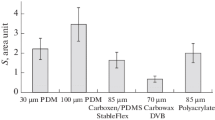Abstract
We examined the usefulness of thiosulfate as an indicator of hydrogen sulfide poisoning by analysing sulfide and thiosulfate in three cases. In the first (non-fatal) case sulfide and thiosulfate were not detected in the blood samples from any of the four workers involved in the accident. In the urine samples, only thiosulfate was detected in three out of the four workers at a concentration of 0.12–0.43 μmol/ml, which was 4–14 times higher than the level in a healthy person. In the second (fatal) case sulfide and thiosulfate were detected in the blood sample at concentrations of 0.007 μmol/ml for sulfide, and 0.025 μmol/ml for thiosulfate. The thiosulfate concentration was at least 8 times higher than the level in a healthy person. In the third (fatal) case sulfide and thiosulfate were detected in the blood sample at concentrations of 0.95 μmol/ml for sulfide, and 0.12 μmol/ml for thiosulfate. Based on the above results, we concluded that thiosulfate in urine is the only indicator to prove hydrogen sulfide poisoning in non-fatal cases, while the analysis of sulfide in fatal cases should be accompanied by the measurement of thiosulfate in blood.
Similar content being viewed by others
Author information
Authors and Affiliations
Additional information
Received: 20 November 1996 / Received in revised form: 20 February 1997
Rights and permissions
About this article
Cite this article
Kage, S., Takekawa, K., Kurosaki, K. et al. The usefulness of thiosulfate as an indicator of hydrogen sulfide poisoning: three cases. Int J Leg Med 110, 220–222 (1997). https://doi.org/10.1007/s004140050071
Issue Date:
DOI: https://doi.org/10.1007/s004140050071




